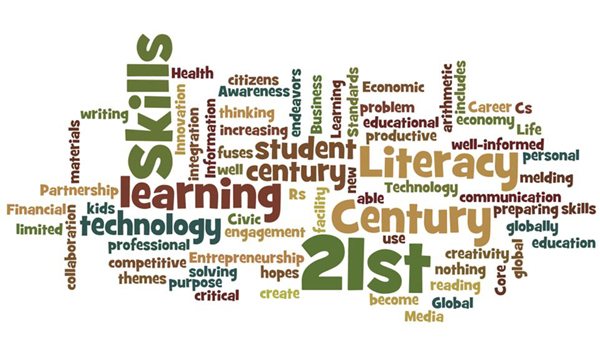
21st Century Learning (http://www.unr.edu/pathway/learning)
The twenty first century learner is characterized by being a busy, multi-tasker that will have a myriad of external pressures upon them. From the worries of world problems, present and future, to the concern of future jobs, the modern learner has a lot to think about.
Am I one of these twenty first century learners? I most definitely am. I intentionally do not use the internet as much as some people, but it would be very difficult to escape it. I live my life fairly fast paced. I rely on digital devices connected with digital tools to facilitate that pace. Currently, I am working on a laptop in a hotel room. I have a tablet open with research. I am texting on one of two cell phones. How did I get here? I used my cell phone as a boarding pass at the airport after verifying the gate on an app. I bypassed the airline personnel and screens relying solely on my phone. When I landed, I verified my hotel based on another app. I went to a car rental counter and received a car that I had booked online. I then used GPS on my phone to get to that hotel. I used the hotel app the check in online and only had to pick up the key card at the front desk. There is no way around saying that I am a twenty first century student fully immersed in the digital world.
My life and the lives of today’s students are continually changing. Dr. Michael Wesch said, “We can’t live the next one hundred years the way we lived the last one hundred years.” How true that is. The amount of hours spent per day on digital devices is substantial. No longer are television and printed media the prominent source of information; internet sources have replaced them both. The quantity of knowledge available to these students on the internet is astronomical. In every digital device, one can access the vast majority of currently usable data. Today’s student cannot live without their digital devices – nor should they be expected to. The question is, “how can we cater education to the characteristics of twenty first century learners?”
The most prominent way is to include more of the media to which they have grown accustomed. Students will be continually using social media, search engines, streaming video sites, and blogs. An adaptable teacher will use these tools to help to reach the students. A key technique to adapting education is to engage the students. Marc Prensky, in “The 21st Century Digital Learner”, argues that students need more input into their educational process. Students of today are bored in a traditional classroom (and I can say that I am no exception). Students would like to have the goals from the teachers set forth and then be given the freedom to choose how to achieve those goals on their own. In this way, students can take their education into their own hands. The digital tools of today have shifted the fundamental manner of how students intake information. Previously, information was one way. A teacher or book gave students information. Now, information is two way and live! A student can receive information and instantly give feedback regarding the information as they see others give their feedback. This can create discussions at that very second. Links can be added and discussion can flourish into creation of new ideas and concepts. The way that information is received is changing from one-way, to two-way, to a conversation, to a living creation. It is exciting to try to think of what will come next.

A representation of a classroom that utilizes varied digital approaches to reach students (http://www.novadesk.com/blog/bid/72193/21st-Century-Classroom-Infographic).
Our team must utilize a varied approach to reach both 20th and 21st century learners. A traditional present information and demonstrate can be utilized, as well as a more modern approach of giving a student a problem and letting them come to the answer. If we allow the student to pick which method(s) are best for them, it will encourage students to actively learn and create. It will be essential to give students as many options as possible without overwhelming them. Our project team will work together to find that delicate balance in order to reach as many potential learners as possible with our project.